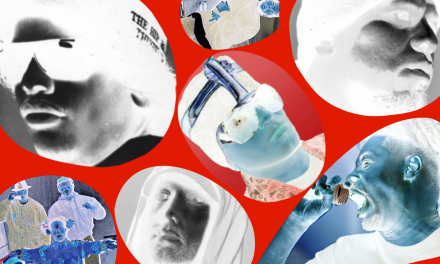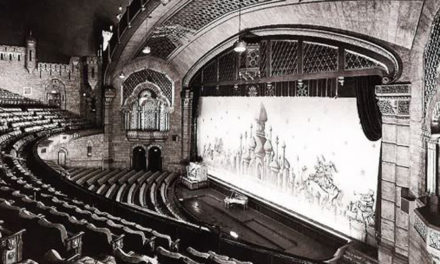When I go to see a movie, I go alone. It’s not to say that staking out a row in a theater with my friends and perching our legs on the seats in front of us while plunging ours hands into cardboard containers of popcorn and continuing the conversations we had in the car ride there about last night and exchanging glances that send us howling isn’t a valuable experience — because it is — but there is something about walking into a dark theater, alone, and leaving by myself two hours later that holds an incredible amount of power. The theater is a place of no light, no productivity and no obligation. Individuals become an audience, a group of friends become strangers and everyone is reduced to a set of eyes in the dark.
Although I went alone to the 39th annual Atlanta Film Festival — to three theaters and to six different films — there was a kind of camaraderie among festival-goers that was impossible not to sense. The same woman with an afro (that seemed to have expanded every time I saw her) chatted with me in line each evening about what she’d seen, and a man with a backwards Atlanta Hawks cap bought a round of cold beers for everyone waiting to view “Kurt Cobain: Montage of Heck”. The lobby of the Plaza Theatre buzzed after each film let out. No one rushed to get home.
The festival ran from March 20 to 29, spanned nine different venues across the city and received a record number of submissions this year. It featured films from over 100 countries, contributing to Atlanta’s emergence as an entertainment hub, and placing it on the map with cities like Los Angeles and New York. Not only were there narrative features, documentaries and shorts shown over the nine-day event, but the festival offered workshops, conferences, happy hours and opportunities to explore the nooks and crannies of Atlanta. The festival was a celebration, not just of cinema, but of a city coming together. I went alone, and yet I felt like I was a part of something.
“The Heyday of the Insensitive Bastards”
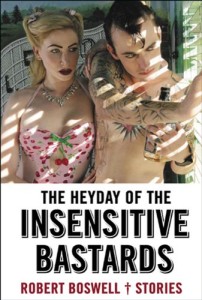
Photo Courtesy of GrayWolf Press
Based on a collection of short stories by Robert Boswell, seven directors took command of their own medium that ultimately formed a truthful portrayal of Boswell’s text of heartache, growing pains and grief. Actor and filmmaker James Franco, who produced and created the project in collaboration with students in his filmmaking class at UCLA, said on Wednesday, March 25 at the Rialto Theatre that he was looking for material that could stir his college students to make something moving. “I look for something that, hopefully, they can capture better than anyone,” he said in a Q&A segment after the screening. “There are certain subjects and themes I think younger filmmakers are better adept at.” The film’s narrative, which features Franco himself as well as names like Jimmy Kimmel, Natalie Portman and Kristen Wiig hardly feels familiar or Hollywood at all. In the chapter entitled “Miss Famous,” Wiig appears as Monica, a cleaning lady from Albuquerque, with heavy eye shadow and tanned skin who longs to write a novel. In “Guest,” Charlie Foster (Rico Rodriguez) suffers stares and shoves and flying dodge balls on the playground as he struggles to cope with the reality of his wheezing, dying father at home. The film closes with a chapter in which a group of 20-somethings realize, after a night of psychedelic mushrooms and acid, that they need a change. “Each section depends on the others, so this piece has its own kind of rhythm,” Franco said. The pieces work together to conjure a feeling of fantasy while staying grounded in human realities.
“Breathe” (“Respire”)
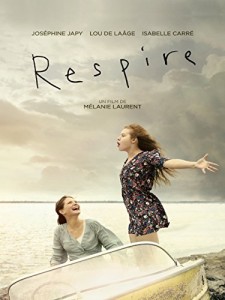
Photo Courtesy of Move Movie
In the French film “Breathe” (“Respire”), directed by Mélanie Laurent, the viewer doesn’t see 17-year-old protagonist Charlie’s (Joséphine Japy) face for the first few shots. The camera first shoots her feet getting out of bed and then cuts to her bobbing shoulders as she walks downstairs, then to her face as she holds a bowl of cereal to it. When we do see Charlie’s face, it becomes obvious that Laurent set out to capture beauty. Charlie is beautiful, and the image of her dominates the camera. In every subsequent moment, Laurent continues to use beauty to tell the story. Charlie’s isolation and distance from her feuding parents can be seen in her solitary walks to school in pristine, suburban France, her passing through the hallways without anything nor anyone else in focus, and the few words she exchanges with her mother in the evenings. Laurent evokes a strong empathy in the viewer from the film’s beginning, which is only heightened when Charlie meets Sarah (Lou de Laâge), a new student who lets her hair go wild, hops on the backs of motorcycles and dances like she is possessed by some kind of spirit. Despite the film’s stunning aesthetic, the lighting and complexity of Laurent’s shots imply Charlie’s own sense of fear, and a beautiful film soon turns ugly. Laurent’s film is meticulously made, but manages to express a deep kind of chaos in the narrative’s characters, resulting in a kind of psychological tension that is hard to watch, but equally hard to turn away from. The sound of Charlie’s heavy, asthmatic breathing which marks the film’s ending leaves the audience too, struggling for air.
“Sunshine Superman”
Maura Strauch’s documentary “Sunshine Superman” tells the story of Carl Boenish, a filmmaker and adventurist whose life work took the form of hundreds of BASE (an acronym meaning “building, antenna, span and earth”) jumps, or skydives from each of these surfaces and platforms in the 1960s and 70s. Boenish, who never jumped without a 16 mm camera attached to himself and who would never let others jump before he could first climb out on a ladder protruding precariously out to the side in order to film their jump, had reels and reels of footage begging to be developed into cinematic story. Strauch, who got a hold of Boenish’s collection, created a film that equally valued the thrill of the dive with the mystery of Boenish’s character and his marriage with his wife, Jean. The documentary introduces the world to a couple that didn’t fit well in the constraints of the working world but fit well together. Neither Carl nor Jean worked a 9-5 job, and their friendship and marriage stayed rooted strongly in their shared love of BASE jumping. The raw footage of the Boenishes and their friends soaring through the air off mountains and jagged cliffs and Houston skyscrapers gave the film a kind of life that sustained the 100 minute viewing experience without lag. Boenish’s last jump, which cost him his life, changed the mood of the film from a very high high to a profoundly low low, but Strauch managed not to make his death the film’s focus. The documentary celebrated the work of two individuals who tested the limits of mankind and dedicated their lives to truly living. The film appeared to already have been made by Boenish, which speaks to Strauch’s ability and vision as a filmmaker to tell a story.
“Kurt Cobain: Montage of Heck”
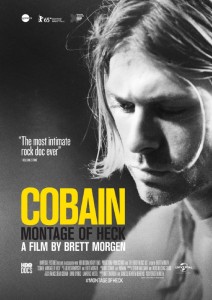
Photo Courtesy of Universal Studios
The last film shown at the festival was one that was added only three days before the festival’s start. Atlanta Film Festival Programming Director Kristy Breneman said that the trailers of “Kurt Cobain: Montage of Heck,” a documentary on Nirvana’s band leader Kurt Cobain, who died in 1994, had generated such a powerful response that it needed to be included in the festival’s lineup. The documentary, directed by Brett Morgen, which premiered at the 2015 Sundance Film Festival, was made possible by Cobain’s family who provided footage, journal entries, art and the rest of his personal archives to the filmmaker. The heavy weight of the documentary kept the raucous crowd completely still and quiet in the theater for the 132 minute run-time. Interviews with Cobain’s parents, siblings, stepmother, old friends and his widow, Courtney Love, illustrated Cobain so vividly and with so much detail that he seemed almost to come back to life for a few hours. Morgen made a bold choice in his filmmaking with his decision to animate. He told some of Cobain’s story through animation matched to audio of Cobain’s old, privately recorded telephone calls and personal anecdotes.
Morgen treaded the line between Cobain’s lasting vigor and impact and his death in a way that perfectly represented him; while Cobain was a voice of his generation and a martyr for art and for self-expression, he was also a symbol of desperation and self-destruction. The most jarring and intimate part of Morgen’s documentary was the inclusion of Cobain’s personal journals that felt equally an invasion of privacy as a way of understanding. In the entries were thousands of song lyrics, poems, lists, letters to Love and violent images that act as representations of all that went on in Cobain’s head. Morgen’s documentary gave Cobain an identity beyond that of the musician or artist or legend; through the chronology of the film, he became human. Despite its heaviness, the documentary closed the Atlanta Film Festival, not with solemnity, but with appreciation. When the film let out on Sunday March 29, it was some time before anyone exited and walked to their car; the energy from the theater stayed locked inside as festival-goers talked and reflected. There was a mutual feeling of respect, both for Cobain and for the documentary art form itself that made the film a sturdy anchor to a festival that proved Atlanta’s best yet.
— Ellie Kahn, Staff Writer






